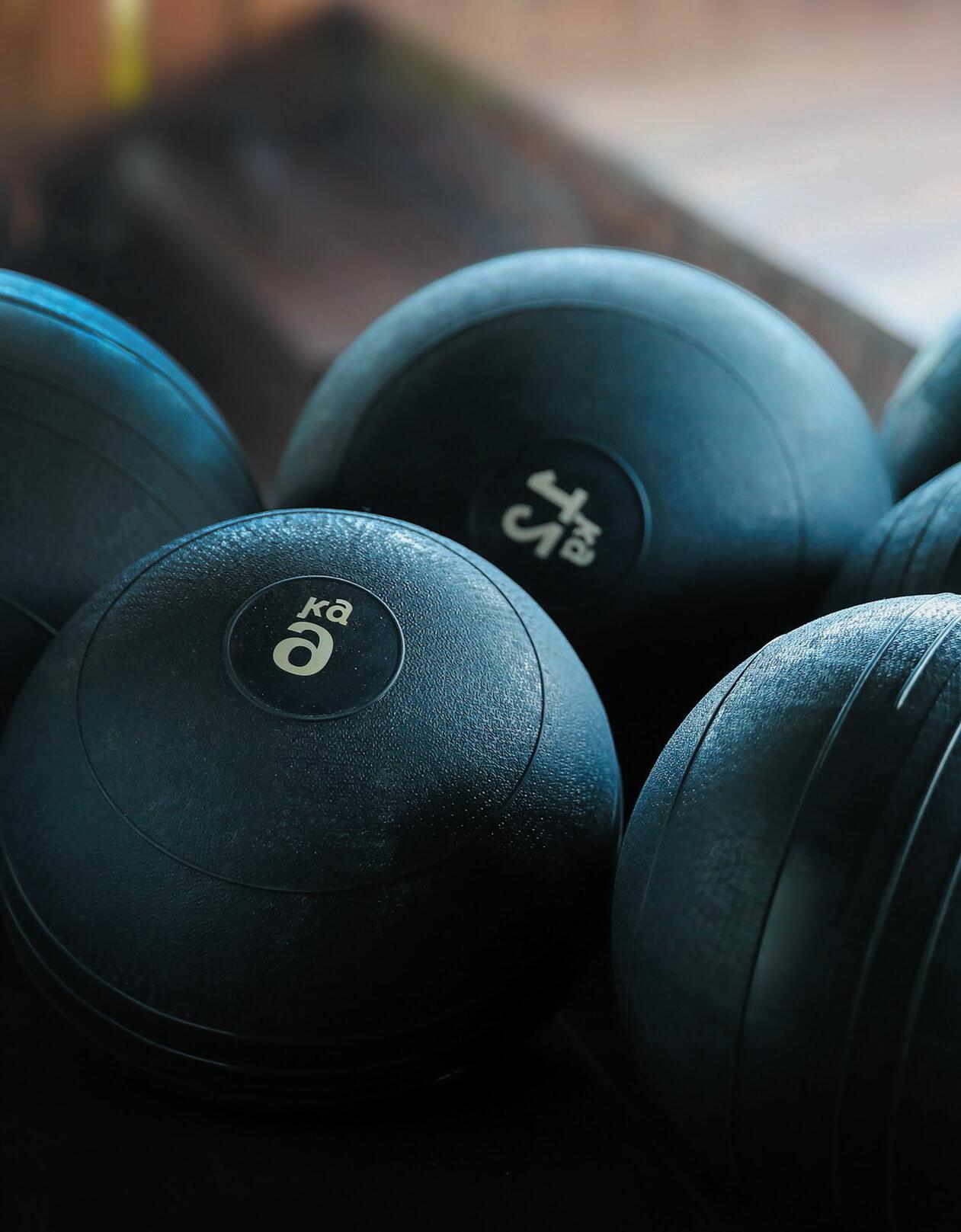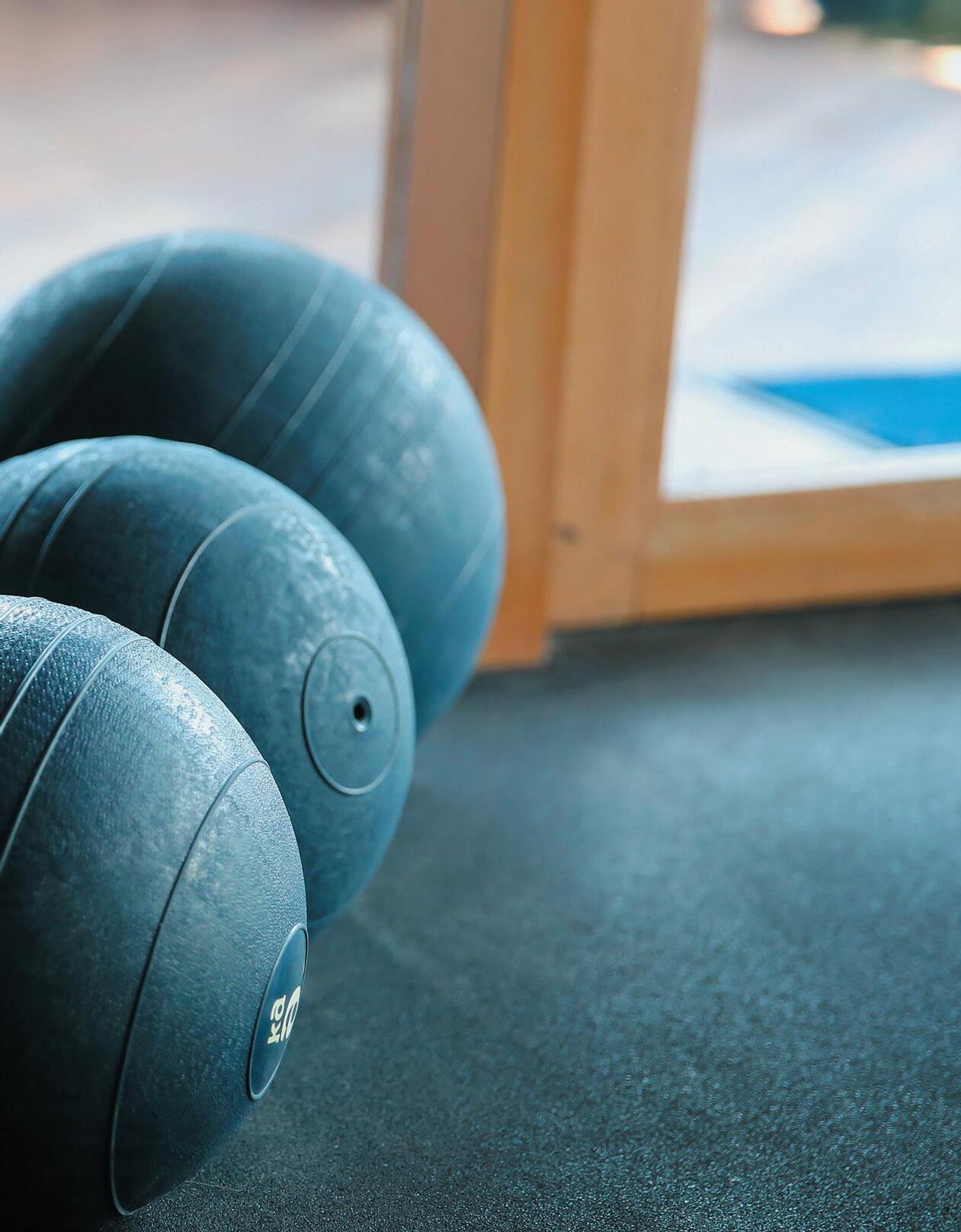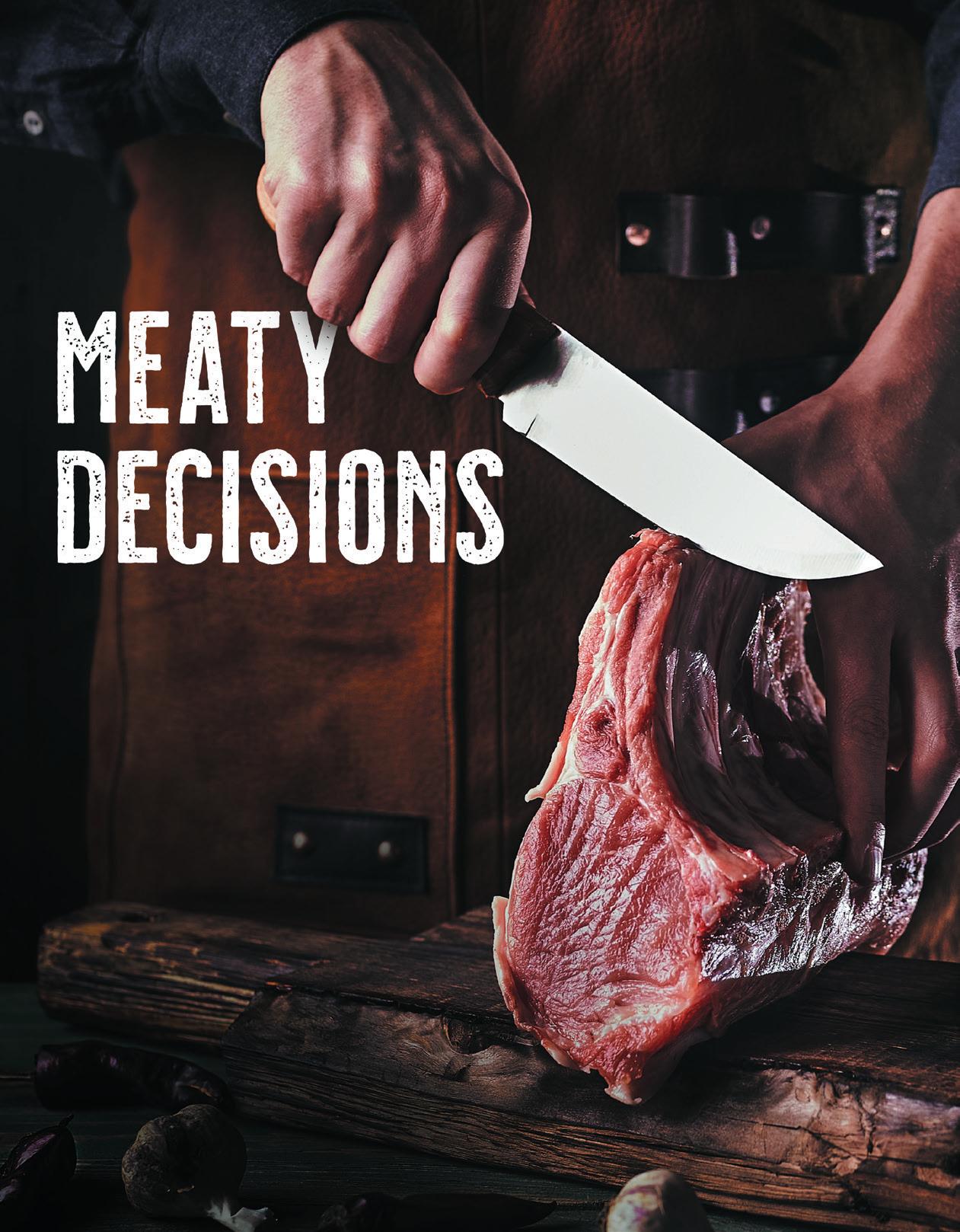
4 minute read
SIMPLE TOOLS FOR YOUR FIRE STATION GYM: THE MED BALL
By Ryan Provencher, Firefighter Peak Performance Founder and Executive Fitness Advisor for CRACKYL Magazine
NO.1 SQUAT PRESS
Begin in an athletic stance, elbows at 90 degrees.
Sit back into a squat position, thighs parallel to the ground.
Press arms forward into full extension.
Pull arms back and return to starting position.
TACTICAL APPLICATION: FRONT LOADED SQUAT MOVEMENTS SUCH AS LIFTING AND OPERATING EQUIPMENT.
NO.2 LATERAL THROW - LEFT
Begin in athletic stance, elbows at 90 degrees, left shoulder to the wall/surface.
Rotate to the right, bending at the knees, loading your right foot.
Drive off your right foot, rotating to the left as you toss the ball to the wall/surface.
Catch and return to starting position.
For lateral throw right repeat technique above, concentrating on the right side.
TACTICAL APPLICATION: ROTATION/ANTI-ROTATION MOVEMENTS SUCH AS FORCIBLE ENTRY.
THE MED BALL IS A SIMPLE TOOL THAT’S INCREDIBLY WELLSUITED FOR FIREFIGHTERS TO BUILD EXPLOSIVE POWER THROUGH DIFFERENT MOVEMENT PATTERNS AND RANGES OF MOTION.
The round shape and soft design are ideal for exercises that challenge stability, reaction time, and hand-eye coordination. I have found crushing a med ball for 20 minutes to be a fun way to build strength and stamina while releasing stress.
NO.3 VERTICAL PRESS/THROW
Begin in an athletic stance with elbows low.
Bend knees slightly, press upward as you throw the ball into the air or to the wall/surface.
Catch and return to the starting position.
TACTICAL APPLICATION: VERTICAL PUSHING MOVEMENTS SUCH AS BREACHING CEILING.
NO.4 PULL OVER FLOOR SLAM
Begin in an athletic stance, elbows at 90 degrees.
Drive the med ball up and over your head, touching the back of your neck.
Pull the med ball over as you sit back into a squat, slamming the ball to the floor.

Catch and return to the starting position.
TACTICAL APPLICATION: VERTICAL PULLING MOVEMENTS SUCH AS PULLING CEILING.
WORKOUT TRAINING PROTOCOL: 30/30
WARM-UP 10 minute dynamic warm-up.
TRAINING
Perform repetitions of each exercise for 30 seconds. Recover for 30 seconds between exercises. Focus on explosive movement for each repetition. Complete circuit four times.
COOL-DOWN 10 minute comprehensive cool-down.
VISIT
MODERATE INTENSITY TRAINING
Maintain Rating of Perceived Exertion (RPE) between five and seven and heart rate between 60 percent and 80 percent of estimated maximum.
HIGH INTENSITY TRAINING
Maintain a Rating of Perceived Exertion (RPE) between seven and nine and a heart rate between 80 percent and 95 percent of estimated maximum.
WHAT IS THE CARNIVORE DIET?
By Danielle Cook, MS, RD, NBC-HWC
There is no shortage of "alternative" diets – paleo, vegan, pescatarian, Mediterranean, keto, you name it. But one of the newest on the block is the carnivore diet. If it walks, swims or flies, according to the rules of the carnivore lineup, you can and should eat it.
Orthopedic surgeon Shawn Baker, a carnivore diet proponent and author of the 2018 book "The Carnivore Diet" makes a strong case for eating animal products. According to Baker’s website, a carnivore diet will get you ripped, cure your depression, reduce joint pain, reverse autoimmune diseases, and much more.
When things sound too good to be true, I get curious, so I did a little research to examine the positives and negatives of filling my plate with pounds of meat.
WERE MOTIVATED TO CHANGE THEIR DIETS

THE CARNIVORE MENU IS LIMITED: BEEF, PORK, LAMB, ORGAN MEATS (E.G. LIVER), POULTRY, FISH, EGGS, LARD, BONE MARROW, BUTTER, SALT, PEPPER, WATER, BONE BROTH, AND GRAVIES MADE FROM MEAT DRIPPINGS ALONE.
Some people add milk, cheese, yogurt, coffee, and tea, but no vegetables, fruit, nuts, seeds, legumes, grains, herbs, spices, cereals, bread, pasta or alcohol. As people adapt to eating only animal products, some report fatigue, headaches, insomnia, changes in bowel frequency and consistency, rashes, joint or muscle aches, and increased thirst—but these symptoms appeared temporary. Advocates of the carnivore diet recommend plenty of water, replacing electrolytes, and resting during this transition stage. Why would anyone severely restrict their diet to just a few foods? A social media survey of
2,029 respondents showed that 93 percent were motivated by health reasons such as diabetes, autoimmune disease, weight loss, and gastrointestinal distress.
The carnivore diet can have positive effects. Because protein is very satiating, there may be weight and body fat loss: when you’re less hungry, you eat less. The lack of variety may cause food to become less appetizing – another boon for weight loss, at least in the short-term.
A drop in caloric intake will result in hormonal changes triggering something called autophagy, a house-cleaning process that rids your body of damaged parts that clog your system and cause discomfort. Inflammation and symptoms of autoimmune disease may also decrease.
Eliminating all high-fiber plant foods can allow your gut to “rest”. Meat consists mainly of protein and fat, which are digested and absorbed in the upper region of the gastrointestinal tract; therefore, very little residue makes it to the large intestine where it could potentially irritate the large bowel or an already inflamed intestinal lining. Eating an allmeat diet has also been shown to change the type of microbes that live in your intestines, possibly leading to a reduction in gastrointestinal symptoms.
BUT IS THE DIET SAFE?
There are very few studies on the carnivore diet and none are long-term. Most have a small sample size, are of short duration, and were poorly designed. For reference, however, we can look at cultures with diets high in meat and fat and compare them with ones that include plant foods.
While there aren’t any truly “carnivorous” populations, there are a few groups that consume animal products as their primary food source. The nomads of Mongolia, for example, subsist primarily on meat and dairy products with occasional tubers, seeds, and berries. Some studies attribute their high rates of obesity and cardiovascular disease to that diet. The Canadian Inuit who consume primarily caribou, polar bear, muskox, seal, and fish with occasional berries, grasses, tubers, and sea vegetables not only experience cardiovascular disease as often as the non-Inuit population, but also have a higher incidence of strokes and osteoporosis. Whole-body CT scans of Inuit mummies dating back thousands of years show extensive atherosclerosis (a build-up of plaque in the arteries).
> ATHLETIC
> CUSTOMIZED FIT

CHRONIC DISEASE?
The “Blue Zones” consist of five locations in the world where people frequently live to over largely without chronic conditions like cancer and cardiovascular disease.
INDIVIDUALS IN THESE AREAS TEND TO SHARE COMMON LIFESTYLE PRACTICES:
THEY’RE PHYSICALLY ACTIVE, FEEL A SENSE OF PURPOSE,
AND CONSUME A DIET HIGH
On the Italian island of Sardinia, for example, the typical diet is whole-grain breads, beans, vegetables, and fruits. Meat is eaten only on Sundays and special occasions. In Costa Rica, people living on the Nicoya Peninsula eat almost no processed foods and have a diet rich in black beans, whole grains, fruits, vegetables, dairy, and very small amounts of fish, poultry, meat, and eggs.
On one small Greek island, the Ikarians eat a variation of the Mediterranean diet, including fruits and vegetables, whole grains, goat milk, honey, fish, beans, coffee, potatoes, olive oil and small amounts of meat.










